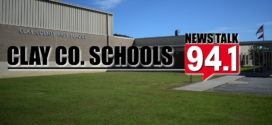Final calculations for tourism revenue from 2023 are showing bigger and better numbers across the Upper Cumberland.
Cookeville-Putnam County Visitors Bureau Director Shan Stout said direct tourism spending increased some 5.8 percent last year. That’s some $10 million more compared to 2022. Stout said increased tourism may seem like an issue for locals concerned about crowded public spaces but the economic benefits extend to everyone in the county.
“If the visitor’s bureau, every February as your property taxes are due and you’re getting ready to write that check, if you received a check in the mail from us for $581 dollars we would be your hero,” Stout said. “So that’s what literally these visitors are doing for you.”
White County Executive Denny Wayne Robinson said tourism spending in White County totaled some $13 million last year, a four percent increase from 2022. Robinson said the growth is due to the natural beauty of the Upper Cumberland that is unmatched throughout the rest of the nation.
“It seems to be steadily growing at about that rate,” Robinson said. “And we’re kind of hoping with the new announcement of the new state park and stuff here up on the mountain at the Scott’s Gulf Wilderness area, we’re hoping that that would will really, really impact that number in the next year or two.”
Livingston-Overton County Chamber of Commerce Director Shannon Cantrell said Overton County saw a 6.4 percent increase. Total spending hit $7.7 million last year. Cantrell said that represents a 6.4 percent increase and daily tourism spending of about $21,000.
“We have moved up in rank just a little bit on visitor spending,” Cantrell said. “We got ninety-five counties. Our previous rank we were eighty-three, we’ve moved up a couple. We’re at eighty-one. We’ve got a lot of room to do a little bit better on that.”
Stout said the increase in Putnam County has been due to transformational marketing efforts from the Department of Tourist Development.
“Now we’re seeing people coming in from Italy,” Stout said. “We had a group from Brazil. We had a group of eighteen people from Belgium. I mean, they’re coming from all over and when it’s an international traveler oftentimes they want to make it count for their American experience and so they’re staying anywhere between three, four, and six weeks’ time, making it a really big trip.”
Stout said they are also seeing a bigger impact from their efforts to advertise the area as a tourist destination in new markets across the United States.
“What (the state has) suggested we do, we’re now reaping the benefits of that,” Stout said. “Because these ideas are really starting to prosper.”
Stout said they have shifted from trying to bring in as many people as possible to targeting a more eco-friendly kind of tourist who will spend the most dollars while visiting.
“That natural traveler, we’re wanting them to respect and take care of these resources,” Stout said. “We want them to come into our downtown and respect and take care of our businesses and our streets.”
Stout said they break their tourism revenue into different categories including lodging, food and beverage, retail, recreation, transportation, and employment, all of which are on the rise.
“Recreation, which are all the great things to do here, is up 10.9 percent and that’s a big increase,” Stout said.
Stout and Robinson both said they have been seeing a steady increase in tourism spending over the past several years.
“Everything is just trending upward,” Stout said. “Just the data that we keep on top of on a regular monthly basis is trending at a nice, steady level. And what you don’t want is these extreme spikes that we’re not prepared to handle. We want to be able to keep our hotels full but not to be where we don’t have lodging. We want to be able to keep our restaurants full but not to the point that people are dissatisfied because they literally can’t get through the door and get seated in a timely manner.”
 News Talk 94.1/AM 1600 Where The Upper Cumberland Talks
News Talk 94.1/AM 1600 Where The Upper Cumberland Talks







